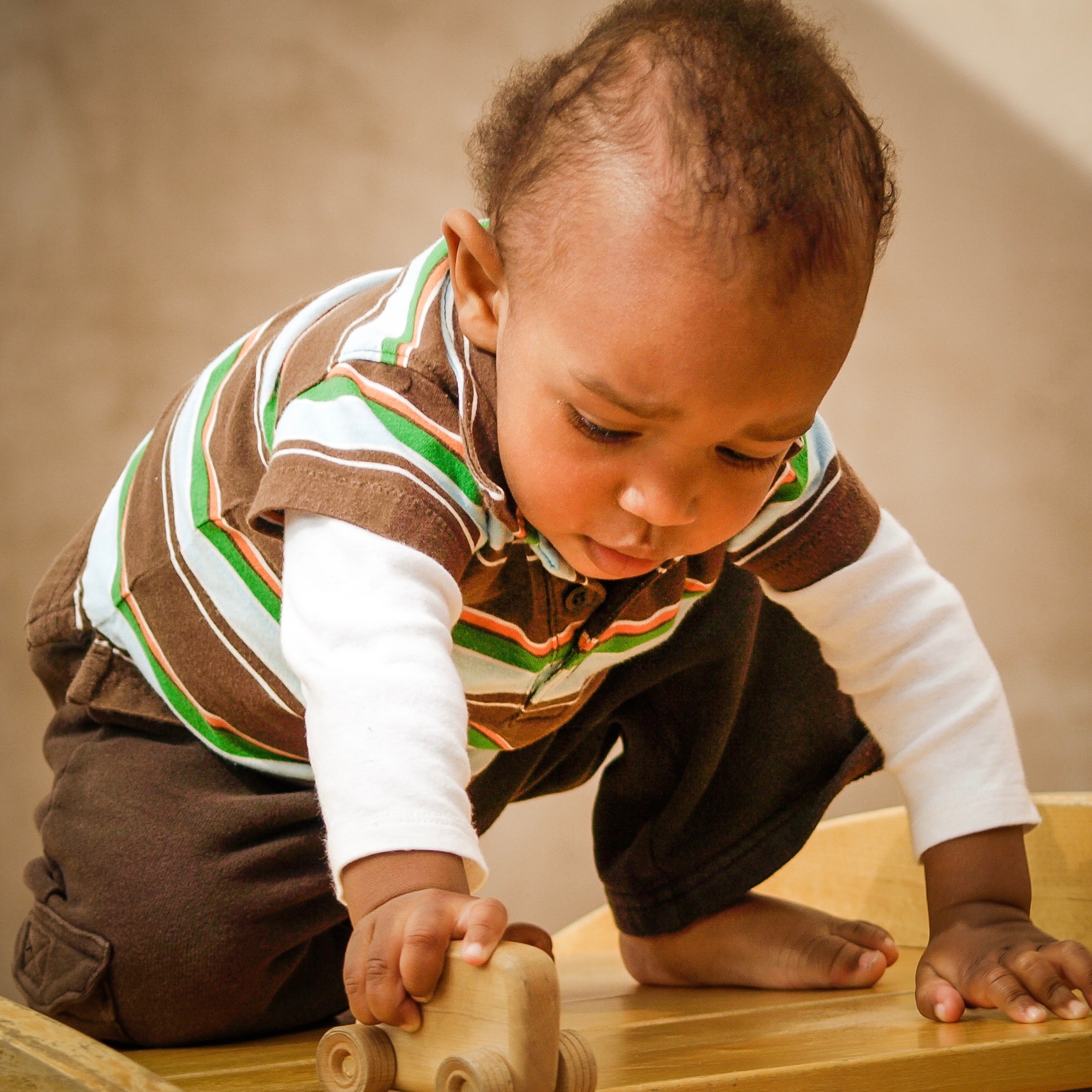
Gradually, through months of patient observation, guided by Magda, I was able to quiet myself enough to sit back and allow Rachel the opportunity to struggle. I began to respect her for her courage, patience and persistence, and she found joy in her own self-directed activity. As I learned to trust her, I learned to trust myself.
-Carol Pinto, from her 1995 article, “Is Faster Better?”
Is Faster Better?
Many parents feel concern about the speed at which infants do certain things, like roll over, sit up, and walk. This is an almost universal anxiety, and often results in parents rushing their babies to do more faster. Putting babies in infant seats designed to prop up the baby before he or she can sit on their own, or encouraging infants to “walk” by holding their hands to support the baby’s weight while the child moves his feet on the floor, are things that many if not most parents have tried. At RIE we learn to appreciate the infant’s pace, and the graceful and natural way infants’ skills unfold without assistance.
There is a wide gap between the time some infants sit or stand, make their first steps, or utter their first words. Despite this wide range in typically developing children, there are no lifelong consequences whether an infant starts to crawl or walk early or late. Magda Gerber said, “Don’t worry about the when, but rather appreciate the how.”
Hurrying a child to do something before he or she is ready can create the feeling that he is not good enough, or that she cannot trust her own instincts. The baby may sense that, to please the important people in his life, he must do the impossible. A child’s desire to fulfill adults’ expectations and wishes can backfire in feelings of inadequacy. On the other hand, when the adults accept, appreciate and enjoy the child, just as he or she is, the child is likely to feel more than adequate. Feeling accepted, the child can naturally develop from stage to stage without anxiety, and will be more likely to play peacefully without needing to be entertained.
In RIE programs, adults allow babies to move freely and without interference in an interesting but safe environment, with age- and stage-appropriate objects and equipment. The environment changes to suit the children. We lay simple toys and objects near the child, like a beach ball, a cloth napkin, wooden and stainless bowls and rings to grasp and explore, allowing them to choose for themselves what to pick up. For mobile babies and toddlers low platforms, boxes, ramps and other structures are there to provide options for children to practice their gross motor skills. In our classes, parents learn to observe and honor all the things their babies can and are doing, and are often inspired to create similar opportunities at home for their children.
A child who has been allowed to move freely develops not only an agile body, but also good judgment about what he can and cannot do, which supports safety. Developing good body image, spatial relations, and a sense of balance helps the child learn not only how to move but also how to fall and how to recover. As Magda said, “Learning to fall, getting up again, and moving on is the best preparation for life.”

